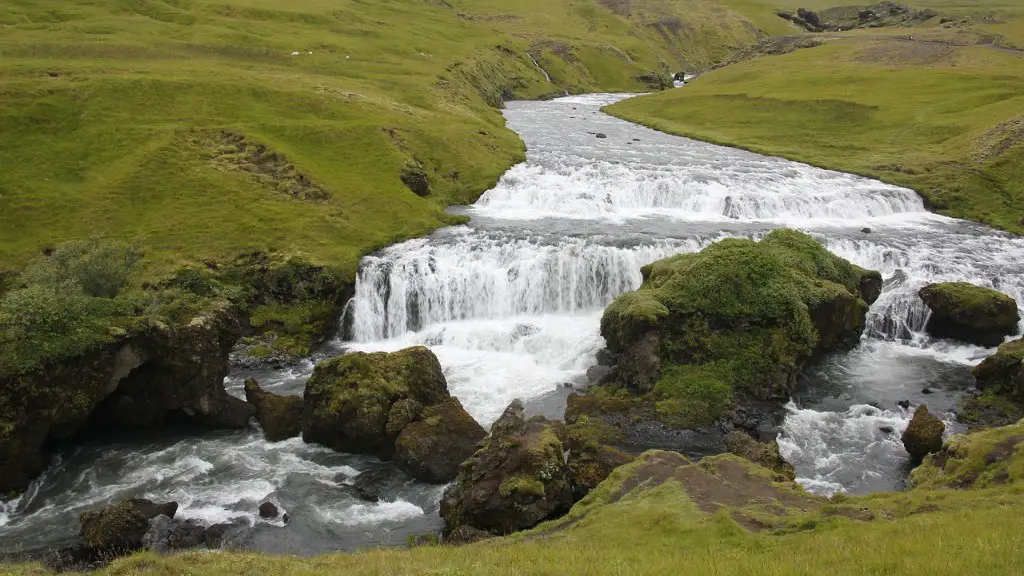Overview of the Yangtze River Flood
The Yangtze River Flood, which occurred in southern China in 1998, was one of the worst natural disasters in history. It caused more than 1,500 deaths and affected more than 100 million people living along the Yangtze River and its tributaries. Flooding of the area caused extensive damage to crops, livestock, and infrastructure, with an estimated economic loss of 80 billion US dollars. The flood, combined with the intensity of the El Niño phenomenon, is often cited as contributing to the force of the flooding.
Contributing Factors of the Flood
The primary cause of the Yangtze River Flood of 1998 was an unusual amount of precipitation, combined with a lack of an adequate reservoir system to control water flow. This was exacerbated by the El Niño phenomenon, which causes an increase in the amount of precipitation and runoff in the area. In addition, the Chinese government had implemented an agricultural policy that required farmers to cultivate flood-prone land, which set the stage for the disaster. Finally, deforestation along the riverbanks led to soil erosion and an increase in the likelihood of flooding.
Impact of the Flood
The effects of the Yangtze River Flood of 1998 were devastating. In addition to the 1,500 deaths and the estimated economic loss of 80 billion US dollars, an estimated 2 million people were left homeless due to the flooding. Low-lying areas were submerged, crops were destroyed, and livestock was killed. The damage to infrastructure was also significant, with bridges and railways being destroyed, electricity and communications disrupted, and roads blocked.
Chinese Government Response
Following the Yangtze River Flood of 1998, the Chinese government sprang into action. Over the course of the next year, extensive efforts were made to repair the damage and rebuild the affected areas. The government also implemented a number of preventative strategies, including stricter regulations on deforestation and better flood control infrastructure. In addition, economic aid was provided to assist those who had lost their homes and livelihoods.
International Eligibility for Aid
In the wake of the Yangtze River Flood of 1998, a number of international organizations and private donors provided humanitarian aid to affected individuals. The Chinese government was, however, wary of allowing international aid on its soil, citing concerns over its independence and sovereignty. As a result, the Chinese contributed 95% of the total aid received, while international organizations and private donors provided the remaining 5%.
Legacy of the Flood
The legacy of the Yangtze River Flood of 1998 has had a lasting effect on the region. The government has implemented various preventative measures, such as constructing new dams and reservoirs, to protect against future floods. Furthermore, the incident raised awareness of the importance of sustainable management of natural resources, and of the need for adequate disaster response systems.
Environmental Impact
In addition to its devastating economic and social effects, the Yangtze River Flood of 1998 had a lasting environmental impact. The flooding caused widespread soil erosion, forcing eroded soil particles into the river. This caused an increase in water turbidity, which in turn resulted in increased levels of toxic pollutants, including heavy metals and pesticides. These pollutants have had a detrimental effect on aquatic habitats, as well as on local drinking water sources.
Long-term Effects on Agriculture
The destructive power of the Yangtze River Flood of 1998 has had a lasting effect on agriculture in the affected areas. The flooding caused extensive damage to crops and livestock, resulting in widespread famines and widespread food shortages in the wake of the disaster. To date, the agricultural sector in the effected areas has yet to fully recover from the aerial flooding.
Humanitarian Action
In the wake of the Yangtze River Flood of 1998, numerous international crews and other humanitarian organizations provided aid and assistance to those affected. Aid ranged from food and water, to medical supplies and materials for rebuilding. Furthermore, these organizations also provided psychological counselling and other forms of support for those who had lost family members, homes and livelihoods.
Preparedness and Disaster Management
The Yangtze River Flood of 1998 was a stark reminder of the importance of disaster preparedness and management. The disaster highlighted the need to implement long-term strategies that address environmental protection, disaster response, and the provision of aid and assistance. As such, many experts argue that improved disaster preparedness and management is essential to mitigating the effects of such natural disasters.
Economic Aid and Assistance
The economic ramifications of the Yangtze River Flood of 1998 were severe. In addition to the estimated 80 billion US dollars of economic damages, many people were left without jobs or homes, resulting in a rapid decrease in economic activity. To address this, the Chinese government and international organizations provided economic aid and assistance, such as job training programs, to those affected by the disaster.
Recovery and Rebuilding
Following the Yangtze River Flood of 1998, the Chinese government, international organizations, and private donors all made efforts to speed up the process of recovery and rebuilding. To this end, monetary compensation and other forms of aid were provided to those affected, while infrastructure and housing were repaired or rebuilt. Additionally, stricter regulations were enacted to protect the region from future disasters.
Conclusion
The 1998 Yangtze River Flood was one of the worst natural disasters in recent memory. Its impact was devastating, with thousands of lives were lost and hundreds of millions affected. In the wake of the disaster, the Chinese government, international organizations and private donors all worked together to mitigate its effects and rebuild what had been destroyed. While recovery and rebuilding efforts are ongoing, the lessons learned from the flood remain a reminder of the importance of planning for such disasters to ensure such destruction is never repeated.



